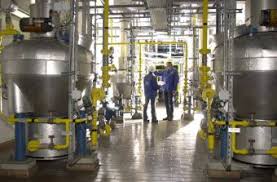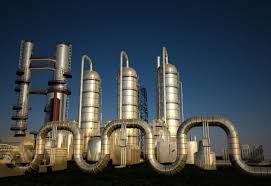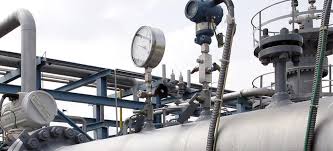


GT has years of experiences of customer solving problems where competition failed or under-performed in various applications and countries.
Our experience showed that 85% of incident occurring on graphite equipment are coming from peripheral equipment or mistake during installation and maintenance which bring overstress on graphite parts.
Problems could always be classified into two categories; mechanical (overstress) and/or chemical (corrosion).
See hereunder a list of common issues and possible solutions from GT.
| Issue | Possible cause | Solution |
| Steam/water hammering (noise evidence) | Condensate line not well drained (see page ) Steam valve opening/closing too fast |
Use reinforced block design SHOCK PROTECT®, use our device HAMMER PROOF® on piping. Modify piping installation and/or instrumentation. Review SOP. Click here to know more. |
| Thermal shock break graphite | At startup, sequence of media introduction creates thermal shock. Steam temperature too high. |
Use PTFE or carbon impregnation graphite grade (GT FLON/GT CARB) instead of phenolic impregnation. Adopt fine grain graphite (<0.04mm) to improve thermal shock resistance. Click here to know more |
| Corrosion with phenolic impregnated graphite | Strong oxidant in process fluid. Resin not well stabilized. |
Use PTFE or carbon impregnation (GT FLON / GT CARB). Use fine or GT TOYO TANSO ultrafine grain graphite (consult us). Click here to know more |
| Graphite nozzle break | Expansion bellow not well installed or designed. Stress on gasket area too high. Thermal shock. Corrosion of graphite material. Flange corrosion sinter graphite nozzle which create stress. |
Check expansion bellow settings Choose STRESS FREE® design. Header without graphite nozzle Use PTFE or carbon impregnation graphite grade (GT FLON/GT CARB) instead of phenolic impregnation. |
| Erosion of blocks or tubesheet | Velocity too high (maxi 1,7-1,8 m/s with liquid). Hard particle or gas pockets in fluid. Some process holes plugged. Corrosion of graphite and/or resin |
Add C-HARD© “hard” entrance plate. Review design. Adopt FILT-IN©, filter before fluid inlet Unplug holes to reduce velocity. Allow venting of media. Measure graphite hardness to identify corrosion on going. |
| Fouling | Many causes….complex phenomenon Velocity too low sometimes (wrong design). | Choose GT FLON, PTFE impregnated grade Adapt block design to optimize velocity. Click here to know more. |
| Gasket leakage | Hammering and gasket slip. Gasket stress too low. Creeping of gasket which require retightening. Gasket corroded or broken. Compression spring malfunction. |
Inspect gaskets. Use PTFE gaskets with GT sealing design. Adopt STABLE LOAD® spring system. |
| Block / header cracked or leak | Hammering, equipment overtight, corrosion, overstress from piping, mechanical shock or hurt (during holes cleaning operation), erosion, frost damage (equipment not drained in winter), solvent swelling. | Use reinforced block design SHOCK PROTECT® Adopt STABLE LOAD® spring system or HAMMER PROOF® device Adopt STRESS FREE® design. Expertise with customer to solve issue. |
| Reduced heat transfer performance | Fouling Service side baffle bypass Change of flow parameters in the process. | Clean graphite (mechanically, chemically). Inspect baffle. Review original design flow. |
| Hydraulic test pressure going down without leakage find | Slow migration of water into gasket groove. Slow migration of water into closed porosity of graphite Air pocket trap into equipment. |
Fill equipment with water under vacuum. Apply pneumatic test (at low pressure) to check if pressure go down also. Remove air pocket by applying vacuum prior to introduce water or to remove air. |
GT graphite equipment feature major unique technologies improvement which prevent main problem occurring during operations.
Get in touch here with us to know more.
